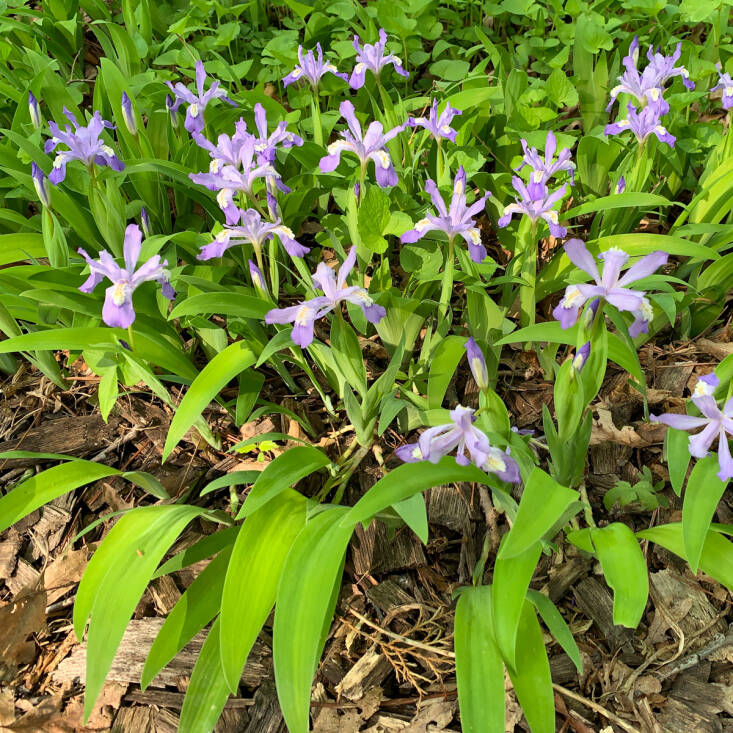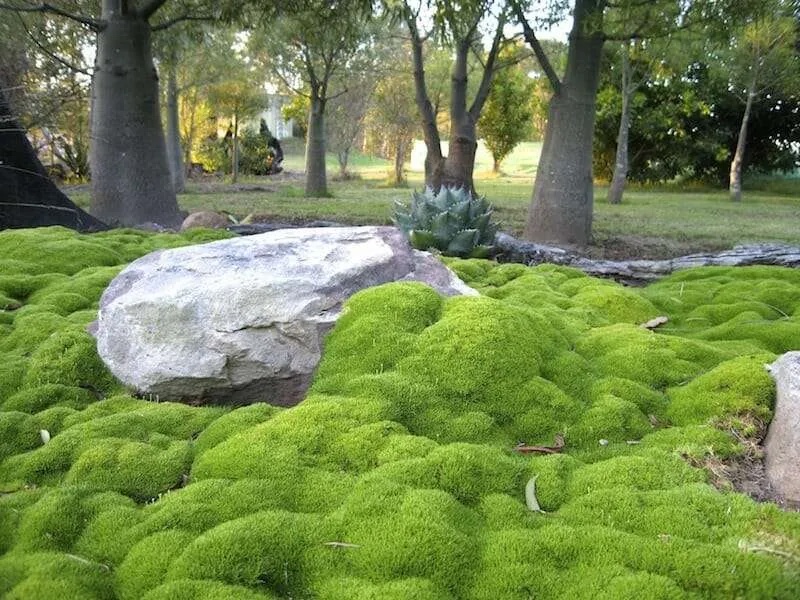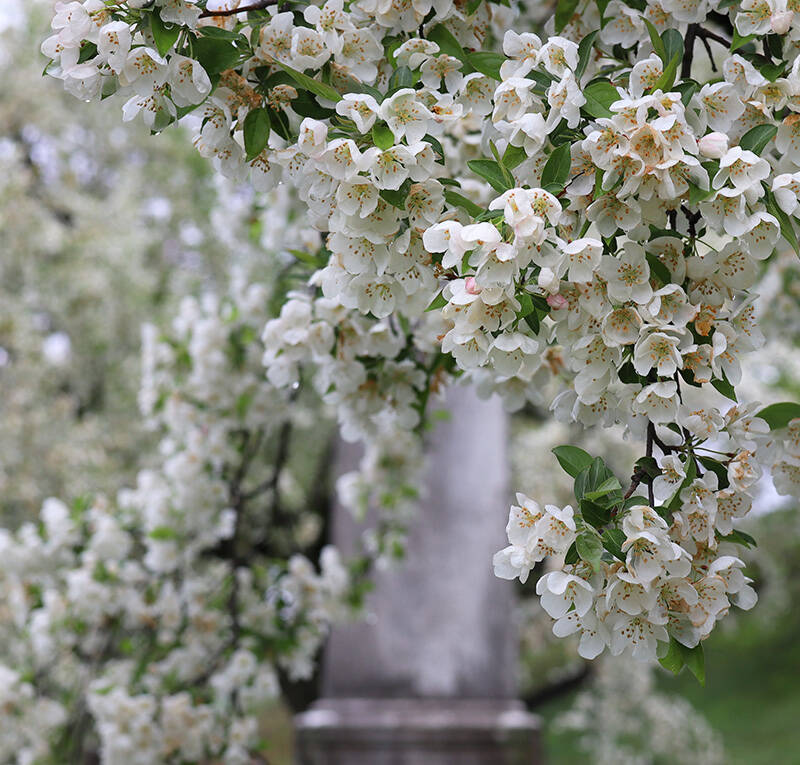“Irises were my first love,” says horticulturalist Kelly D. Norris, the garden author and designer known for his “new naturalism” garden style. He started out managing his family’s iris farm and eventually became a noted iris expert, writing A Guide to Bearded Irises. However, it’s not just the dizzying array of bearded irises that Norris fell hard for: He loved the beardless native irises, too. “The farm I grew up on was not far removed from native prairie remnants, including some that bordered the river. All of the little swales where they’d dug for the railroad tracks and disturbed the floodplain were home to large colonies of Iris virginica,” he remembers. On one occasion, teenage Norris took a potato fork to dig up a patch of irises in the path of development.
Indigenous irises often get less attention than their cultivated counterparts, but as gardeners aspire to plant more natives and design landscapes that better manage rainwater, American irises deserve a second look. Unlike imported irises, native irises are low-maintenance: They don’t require fertilization, and once established they will spread and come back bigger year after year. Even when not in bloom, many native irises have foliage that offers substantial architectural quality. And while we do not yet know about specific host plant relationships, they are beloved by bees, moths, and butterflies.
Native irises, and blue flag irises in particular, are often well-suited to rain gardens and bioswales, which mimic their natural habitats near ponds and streams. Writing for the Ecological Landscape Alliance, Dr. Catherine Neal, a horticulture professor at the University of New Hampshire, noted, “Blue flag iris (Iris versicolor) is a plant that seems to be highly adapted to the lowest area of the rain garden—we have seen it survive where many other species have failed.” Norris has personally been experimenting with breeding native irises, hoping to tease out selections from wild populations that could have a little more horticultural interest in bioswales and green infrastructure. “We need a plant palette for that,” he says.
There are only 28 native iris species in the U.S. (although that number may vary slightly depending on who you talk to), but because they hybridize easily both in nature and with human assistance, there are hundreds of garden forms in cultivation. Plantsman Bob Pries, an iris hybridizer and longtime member and spokesperson for the American Iris Society, encourages gardeners interested in native irises to join Species Iris Group of North America (SIGNA). “They have a seed exchange, which is one of the easiest ways for people to get seeds of a lot of these plants,” says Pries. (Iris lovers might also explore the Society’s Iris Encyclopedia, which lists about 80,000(!) different cultivars of irises, mostly non-native, that have been registered.)
Here’s a primer on the irises native to the United States:
Blue Flag Irises

Familiar to almost everyone, there are regional blue flag irises that grow across the U.S. Throughout the eastern United States you will find Iris versicolor and Iris virginica. Iris virginica is often called the Southern Flag because it grows further south, while Iris versicolor’s range stretches all the way into Canada. Norris notes that these two species hybridize in the wild, and home gardeners can look for the ‘Gerald Darby’ iris, which is a naturally occurring hybrid of the two. “[Native hybrids] are terrific garden plants,” says Norris, who has Iris versicolor ‘Raspberry Slurp’ in his garden.

The native blue flag iris of the west is Rocky Mountain iris (Iris missouriensis), which ranges from Minnesota and Nebraska west into the Rockies and to the coast. In Alaska, parts of Canada, and Maine Iris setosa, with inner petals reduced to just bristles, thrive. Further south, you’ll find Iris tridentata, which grows in brackish water along the coastlines and estuaries in the southeastern states.
Pro Tip: If the phrase “flag iris” leaves a bad taste in your mouth, Norris notes, you’re thinking of the non-native yellow flag iris (Iris pseudacorus), which can be aggressive—invasive even—and has become problematic in some waterways. The native blue flag iris and their hybrids do not have that issue.
Louisiana Irises

There’s about five species of iris that occur in Louisiana and down into Florida that are grouped together as the “Louisiana Irises.” While these are native to the southeast, Pries suspects they may have originated farther north because most of them are fairly cold-hardy and in some cases grow all the way into Canada. Among the Louisiana irises, which all have large flowers, Norris highlights Iris fulva, a reddish iris that has been hybridized to great degrees. “Even in their pure condition they are really lovely, useful garden plants,” he says.
Pacific Coast Irises

There are about a dozen iris species native to the west coast, from Washington down to southern California. The U.S. Forest Service notes that as a group, “they are very colorful, ranging from white, creamy-white to yellow, and a myriad of shades of blue and purple from light lavender to deep purple.” In the wild they all grow within about a hundred miles or less of a coast, and Pries explains, “a lot of them are dependent upon the moisture from coastal fog coming in, but they can’t stand being in water.” Because of their unique habitat preferences, Pacific Coast irises can be hard to grow elsewhere, but Pries says you’ll have much more luck trying to grow them from seed, as they don’t transplant well. Toughleaf iris (Iris tenax) has a reputation of being among the easiest to grow.
Woodland Irises

Woodland irises are tiny, usually under eight inches. Among this group, Iris cristata is a widely available and beloved woodland garden plant that Norris says grows really well in a lot of places beyond its native range, but Pries notes people do have trouble with it in the Western United States, where the humidity is too low. A mat-forming plant, Iris cristata can be used in shady parts of the garden as a groundcover. Also grouped amongst the dwarf irises are rare ones like Clackamas iris (Iris tenuis), whose native habitat is limited to northern Oregon, and Dwarf Lake iris (Iris lacustris), a flower listed as threatened by the federal government that grows only in a small area along Lake Superior in Michigan.
You don’t need to be a purist about growing irises native to your specific area. In fact, Pries encourages gardeners to plant native irises wherever they will grow. “We have a number of irises that are endangered in the United States. If no one is collecting these and no one is appreciating them and growing them, they will be lost because their native area is being destroyed.” But you do need to be responsible in how you source them: Never dig them from wild places and never purchase a plant you suspect may have been dug up in the wild.
See also:
- Ask the Expert: Jeff Lorenz on Planting Strategically for Stormwater Management
- Gardening 101: How to Divide Tall Bearded Irises
- Gardening 101: Iris












Have a Question or Comment About This Post?
Join the conversation